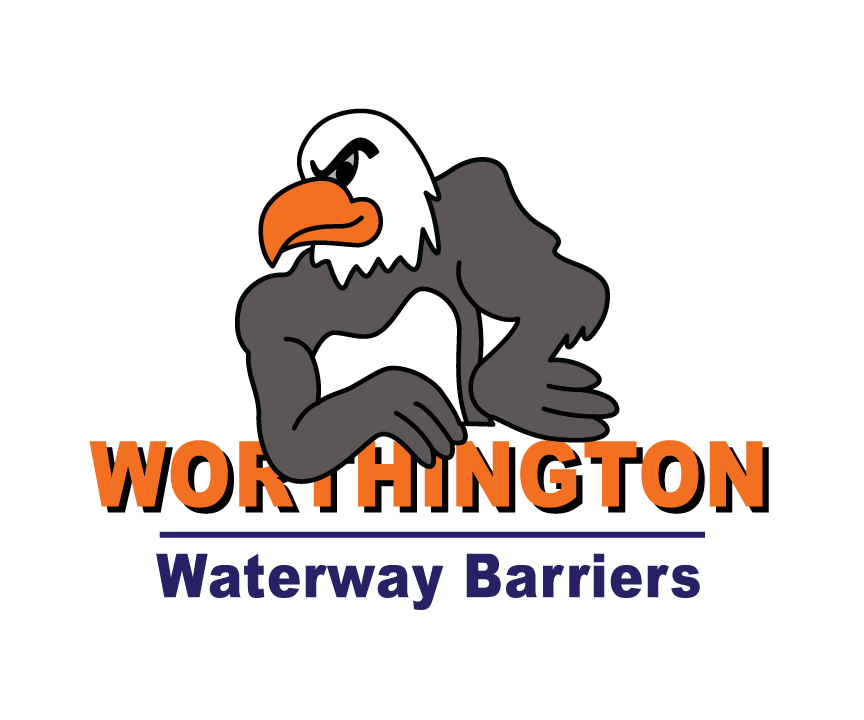Worthington’s Fish Guidance System +92% Guidance Rates
Discover the Original Fish Guidance System by Worthington
Worthington pioneered the original physical fish guidance system/barrier, effectively guiding downward migrating fish, like salmonoid smolts, away from hazardous water intakes and turbines.
Efficient and Safe Fish Passage
Our systems feature floating elements and underwater guiding systems, utilizing natural water flows to direct fish to a takeout point or bypass system, ensuring their safe passage.
Balancing Power Generation and Conservation
Hydroelectric powerplants and dams generate clean, renewable waterpower while posing challenges to the free migration of juvenile salmonoids, eels, and other aquatic species. Collaborating with fishery biologists, Worthington developed physical fish guidance systems to guide fish away from dangerous intakes, ensuring their safe passage.
Leaders in Fish Guidance Technology
Worthington leads in fish guidance technology with installations across the Pacific Northwest, California, and New England states. Our systems achieve survival rates exceeding 90%, leading to stronger adult returns and robust generations of young fish.
Support Sustainable Fish Migration
Experience the unmatched benefits of Worthington's fish guidance systems, promoting a thriving aquatic ecosystem while balancing power generation and environmental conservation. Contact us to learn more about our advanced fish guidance solutions.
Worthington Waterway Barriers is proud to announce the successful installation of our state-of-the-art Fish Guidance Systems in four coastal states: Maine, Oregon, Washington State, and California. These installations mark a significant expansion of our efforts to protect and preserve the delicate marine ecosystems in these regions.
Hybrid/Enhanced Fish Guidance Systems for Efficient Fish Passage
At Worthington Waterway Barriers, we offer specialized High Intensity Light (HIL) systems in addition to our physical Fish Guidance Systems. Our hybrid approach stimulates specific fish species, guiding them towards desired outlets while effectively preventing the spread of invasive species like invasive carp by redirecting them to traps for removal.
Experience and Expertise for Effective Solutions
Our fishery biologists combine expertise in floating barrier systems, such as those used in the Ocean Cleanup initiative, with an in-depth understanding of fish behavior. This unique combination allows our fish guidance system application engineers to design solutions that naturally guide various species, including salmon, eels, shad, and more, without facility shutdowns, excess water spills, or removal during winter or high flows.
Versatile and Effective Designs
Worthington fish guidance systems not only guide fish safely but also serve as efficient log booms, deflecting floating litter and trash, ensuring environmental protection. Our systems have been enhanced by combining light bars and other devices, providing even greater effectiveness for fish guidance.
Proven Results and Tailored Solutions
At the Georgiana Slough diversion along the Sacramento River in California (USA), our physical fish guidance system, combined with a Bio-Accoustic Fish Fence, successfully guided juvenile salmon smolt away from side channels during migration. The results at Georgiana Slough demonstrated guidance rates exceeding 90%.
High Intensity Light (HIL) Systems for Sensitive Species
Our HIL systems are particularly suited for species like eels, unaffected by sound but influenced by light. These systems, when used together with a physical fish guidance system, provide efficient deterrence and guidance.
Fine-Debris Control Solutions for Optimal Passage
In rare cases, we offer fine-debris control solutions to prevent clogging of fish passage structures caused by floating logs, pine needles, floating trash, and other waterborne debris.
For all your fish guidance needs or if you seek to protect existing fish passage structures from debris damage, trust the expertise of Worthington Waterway Barriers. Call us at 330-452-7400 to explore tailored solutions for efficient fish passage and environmental conservation.-452-7400.
Minimal Bypass Flows
Washington (state) Hydroelectric Plant
Steelhead - 92%
Chinook - 86%
Coho - 76%
Maine Hydroelectric Plant (Kennebec River)
Atlantic Salmon - 85%
Bypass Flows: Below 6%
Maine Hydroelectric Plant
Atlantic Salmon - 80%
Bypass Flows: Below 5%


